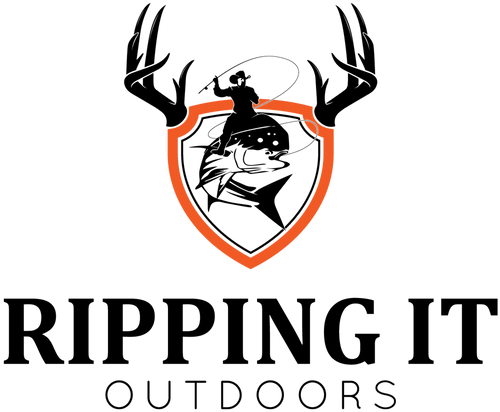Seeders and Planters 101: Plant Smarter, Not Harder
Creating a successful food plot is both an art and a science, requiring careful planning and the right tools. One of the most crucial pieces of equipment you’ll need is a reliable seeders/planters system. The right seeder or planter can make the difference between a thriving plot and a disappointing one. In this guide, we’ll cover the essentials of seeders and planters, discuss their benefits, and help you choose the best option for your food plot needs.
Why Seeders/Planters Matter for Food Plots
Investing in high-quality seeders/planters ensures precise seed placement, which leads to better germination rates and healthier plant growth. Proper seed distribution and depth are critical factors for creating a thriving plot, and these tools help achieve both with efficiency.

Key Benefits:
-
Efficient Planting: Cover large areas quickly and uniformly.
-
Precision: Achieve accurate seed placement at the right depth.
-
Cost-Effective: Reduce seed wastage and maximize yield.
-
Versatility: Suitable for planting a variety of seeds.
Types of Seeders/Planters
When selecting the right seeders/planters, it’s essential to understand the different types available and their specific applications.
1. Broadcast Seeders
Broadcast seeders scatter seeds evenly over a large area. They’re ideal for planting grasses and other small seeds.
Benefits:
-
Speed: Fast coverage of large plots.
-
Simple Operation: Easy to use and maintain.
2. Drop Seeders
Drop seeders release seeds directly below the hopper in a straight line, providing precise control over seed placement.
Benefits:
-
Accurate Distribution: Ensures even seed spacing.
-
Reduced Waste: Minimizes seed overlap.
3. No Till Drills
A No Till Drill is a specialized seeder that plants seeds directly into undisturbed soil. This method preserves soil structure and moisture.
Why Use a No Till Drill?
-
Soil Preservation: Protects soil health by minimizing disturbance.
-
Better Moisture Retention: Ideal for dry environments.
4. Planters
Planters are designed for precise row planting and are ideal for larger plots where uniform spacing and depth are critical.
Benefits:
-
High Precision: Perfect for crops requiring exact spacing.
-
Increased Yield: Maximizes germination rates.
Essential Features to Look For
Choosing the right seeders/planters involves evaluating several key features:
1. Adjustable Seed Rates
Ensure the seeder allows for adjustable seed rates to accommodate different seed sizes and planting densities.
2. Depth Control
Depth control features help ensure seeds are planted at the correct depth for optimal germination.
3. Durability
Look for equipment made from high-quality materials to withstand tough field conditions.
4. Compatibility
Ensure that the seeder is compatible with your existing tractor or ATV setup.
Complementary Tools for Seeders/Planters
To maximize the effectiveness of your seeders/planters, consider using complementary tools such as:
1. Firminator
The Firminator is a versatile piece of equipment that combines seed distribution, soil preparation, and planting in one unit. It’s perfect for creating well-prepared seedbeds.
Benefits:
-
Multi-Functionality: Combines multiple tasks into one pass.
-
Time-Saving: Reduces the need for additional equipment.
2. Mulcher
A Mulcher helps clear and prepare the land by breaking down plant material.
Advantages:
-
Soil Enrichment: Adds organic matter to the soil.
-
Efficient Land Clearing: Prepares the plot for planting.
3. Smooth Rollers
Smooth Rollers are essential for leveling the soil and ensuring good seed-to-soil contact.
Benefits:
-
Improved Germination: Enhances seed contact with the soil.
-
Even Surface: Creates a uniform planting surface.
4. Cultipackers
Cultipackers help firm the soil after planting, which is crucial for proper seed germination.
Benefits:
-
Seed-to-Soil Contact: Ensures better germination rates.
-
Moisture Retention: Helps retain soil moisture.
How to Choose the Right Seeder/Planter for Your Needs
1. Assess Plot Size
Larger plots require more robust equipment like planters or Firminators, while smaller plots may only need broadcast seeders.
2. Consider Soil Type
Evaluate whether your soil is compacted, loose, or rocky. A No Till Drill may be ideal for compacted soil, while lighter soil types can benefit from traditional seeders.
3. Define Your Goals
Are you planting a cover crop, hunting plot, or agricultural field? Different goals may require different types of equipment.
4. Budget Considerations
Invest in the best equipment you can afford. High-quality tools often pay for themselves through better yields and reduced maintenance.
Maintenance Tips for Seeders/Planters
Proper maintenance ensures that your seeders/planters continue to perform optimally. Follow these tips to extend the life of your equipment:
1. Clean After Each Use
Remove dirt, seed residue, and plant material to prevent rust and clogging.
2. Inspect for Wear and Tear
Check for worn parts, loose bolts, and other signs of damage. Replace components as needed.
3. Lubricate Moving Parts
Apply lubricant to gears, bearings, and other moving parts to reduce friction and wear.
4. Store in a Dry, Covered Area
Protect your equipment from the elements to prevent rust and corrosion.
Maximizing Efficiency with Multiple Tools
Combining seeders/planters with complementary tools can significantly enhance your food plot’s success. For example:
-
Use a Mulcher to clear and enrich the soil.
-
Follow up with a Firminator for efficient seeding and soil preparation.
-
Utilize Smooth Rollers to create a level planting surface.
-
Finish with Cultipackers to ensure proper seed-to-soil contact.
This multi-step approach ensures a well-prepared plot and helps you achieve the best results by promoting healthy seed growth and increasing yield efficiency.
Conclusion
Investing in the right seeders/planters and complementary tools can significantly improve the success of your food plot. Whether you’re managing a small hobby plot or a large agricultural field, having the right equipment is essential.
By understanding your plot’s specific needs and maintaining your equipment properly, you can achieve better yields, healthier soil, and a more efficient planting process. Tools like the Firminator, Mulcher, Smooth Rollers, and Cultipackers play crucial roles in this process.
Take the time to select high-quality equipment, maintain it well, and use it strategically. With the right approach, you’ll be well on your way to creating a thriving, productive food plot that supports your goals and enhances the surrounding ecosystem.
